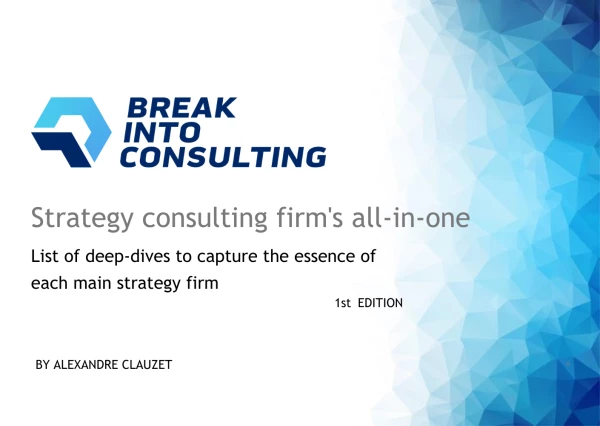Hi! I recently came across an M&A case, and I really struggled to find a convincing approach. I am especially unsure how to do a valuation of the acquisition target - are we expected to do a DCF analysis during the interview? Any advice welcome! :)
Best way to approach M&A cases?


Hi there!
In essence, the fair price of a company (assuming that you keep running the company) is its stand alone value (current operational profits) PLUS synergies & optimization that can be expected over a certain investment horizon. Discounting is almost always disregarded in case interviews (however you should mention it).
The interesting thing is that this principle thinking frame is not only true for M&A situations, but for 90% of all strategic decision cases that you will ever encounter (market entry, new product, capacity expansion, licence purchase, etc. etc.). It is always about value creation! If you learn to rigorously start your thinking from the principles of value creation, the typical case frameworks from well-known books like Case in Point etc. become practically obsolete, while at the same time your thinking becomes way more rigorous and mature.
Then for the structuring, there are a couple of simple notions that you need to adhere to in order to effectively set up and navigate strategic cases (for example, contrary to what is taught in the popular books, NEVER start with qualitative questions like "first I would like to understand the market context..." - this is exactly how you should NOT work as a consultan! This would be the definition of "boiling the ocean" ;-))
Cheers, Sidi

Hi there,
Both frameworks in Case in Point and Secrets of Case Interview for M&A cases can be good starting points.
Sometimes you may need to do DCF calculation but in a very simple way. E.g. applying perpetuity formula (FCF)/(r-g) or using valuation multiples. Most of the times you will not need more than that.
Best
Serhat

Hi,
Here is how to approach M&A and synergies cases:
1. For due diligence M&A cases you can use the following structure:
Market
- Size
- Growth rates
- Profitability
- Segments
- Distribution channels
Competition
- Market shares of competitors and their segments (see the next point)
- Concentration / fragmentation (Fragmented market with lots of small players is less mature and easier to enter from a scratch. Concentrated market is hard to enter but has potential acquisition targets)
- Unit economics of the players (Margins, relative cost position)
- Key capabilities of the players (e.g. suppliers, assets, IP, etc)
Company
- Unit economics (Margins, costs) in current or target markets
- Brand
- Product mix
- Key capabilities
Feasibility of exit:
- Exit multiples
- Exit time
- Existence of buyers
2. For Synergies Calculation cases you can use the following structure:
- Revenue synergies - here you calculate the synergies in price and quantity (depending on the case it may be new geographies, new products, new distribution channels, bigger share on shelves crosselling opportunities, etc.)
- Cost synergies - typically you use a value chain structure tailored to the industry (e.g. supply-production-distribution-marketing-after sales support)
- Risks - major risks that can decrease the synergies (tip: don't underestimate the merging companies culture factor)
- Total synergies potential in $, adjusted by risk (probability of failure)
In private equity interviews, the cases will be much more detailed in financial part. Depending on the company you'll need to:
- Find the relevant information in P&L and Balance sheet
- Do the simplified valuation using NPV: calculate cash flows and make assumptions about growth rate and discount rate
- Do the valuation using comps - you'll have to explain which comps you will use and why
Good luck!














